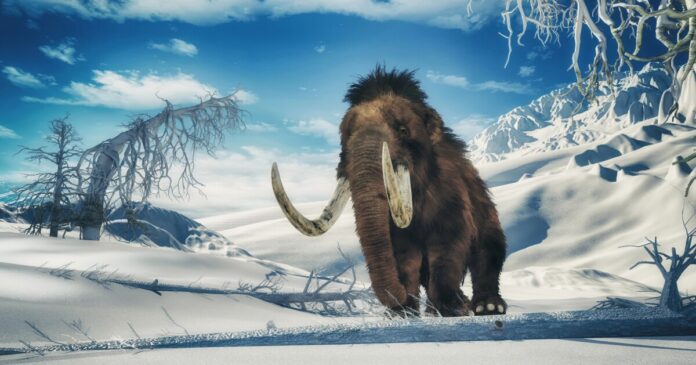Sequencing mammoth DNA has already helped scientists map out how these Ice Age giants evolved, migrated, and survived. But there’s a hidden layer of history still waiting to be decoded – the microbes that lived inside them.
While mammoth genomes tell us who they were, their microbiomes might reveal how they lived. These ancient microbial hitchhikers could hold clues to how mammoths adapted to freezing climates, what they ate as the world warmed and cooled, how shrinking populations affected their ecosystems, and whether microbes played a role in their eventual extinction.
Ancient bones and teeth aren’t just relics of extinct giants; they’re microscopic archives. Alongside the host’s DNA, they can preserve traces of the microbes that lived in and around the creature at the moment of death. These tiny passengers are now proving to be powerful storytellers, helping scientists decode ancient pandemics, dietary habits, and population dynamics.
In a study published in Cell, researchers set out to trace the microbial companions of mammoths across a staggering timeline, from over a million years ago to their final days on Wrangel Island just 4,000 years ago.
The team analyzed 483 genomic datasets from mammoth remains, including teeth, skulls, molars, and even skin. Of these, 440 samples had never been sequenced before, offering a treasure trove of fresh data.
Among them was a steppe mammoth that roamed the Earth roughly 1.1 million years ago. Using advanced genomic and bioinformatic techniques, the team distinguished microbes that were lifelong companions inside the mammoth, and the ones that showed up later, after death.
According to Benjamin Guinet, lead author of the study, the findings mark a major leap in ancient DNA research. “Our results push the study of microbial DNA back beyond a million years, opening up new possibilities to explore how host-associated microbes evolved in parallel with their hosts,” he explained.
Most of the microbes found were environmental or post-mortem colonizers. But six microbial groups stood out; consistently associated with mammoth hosts. These included ancient relatives of Actinobacillus, Pasteurella, Streptococcus, and Erysipelothrix.
And some weren’t just passive passengers. One Pasteurella-like microbe carried genetic hints of virulence and has ties to deadly outbreaks in modern African elephants.
Remarkably, the team reconstructed partial genomes of Erysipelothrix from a steppe mammoth that lived 1.1 million years ago, making it the oldest known microbial DNA linked to a host ever found. But this microbe wasn’t a one-time visitor. Its genetic fingerprints showed up in mammoths from different eras and regions, hinting at a long-term relationship.
The authors acknowledged several limitations that hinder precise conclusions about bacterial prevalence in ancient mammoth populations. Among these were the extremely low quantities of microbial DNA recovered, the post-mortem invasion of samples by environmental bacteria, necessitating stringent filtering that may have inadvertently eliminated genuine microbial signals, and the scarcity of suitable reference genomes in current microbial databases.
“Despite these challenges, our findings form a basis for further research toward a deeper understanding of the microbiome and its impact on health and diseases in Pleistocene megafauna,” the team noted in the study.
By detecting host-associated bacteria, researchers have shown that the samples can preserve entire microbial communities that once lived inside these Ice Age giants.
Looking ahead, future work could use custom genetic “bait” for each of the identified species, which could further improve phylogenomic resolution, to reel in even more microbial DNA, sharpening evolutionary timelines and uncovering genes linked to disease, adaptation, and survival, thus allowing for a broader characterization of the microbiome function profile. With these tools, scientists may one day trace how microbes and mammoths co-evolved.
The new study was published in Cell.
Source: Stockholm University


